The board deck template we wish we had as first-time founders
We're sharing Jam's board deck template. It has been instrumental in growing our startup, and I hope it helps other founders.

Running a startup is a wild ride filled with highs, lows, and everything in between. Productive board meetings are essential to maintain momentum and ensure future growth. I'm Dani, one of the co-founders of Jam, a browser extension that automates bug reporting. Learning how to create an effective board deck has been one of the most important lessons in our startup journey.
After raising Jam’s Series A round, it came time for our first board meeting. My co-founder, Irtefa and I had no idea what to expect. After extensive googling and several board meetings, we arrived at a template that works really well for us.
Today, I'm excited to share our startup’s board deck template— the same one we use every time the board meets every three months. It has been instrumental in growing our startup, and I hope it helps other founders.
Here are all 35 slides of Jam’s board deck template.
Below, I detail how we structured our board deck, what to include in the slides, our board meeting agenda, and tips for using Jam’s deck examples to create your own.
What to put in the slides for your company board meeting
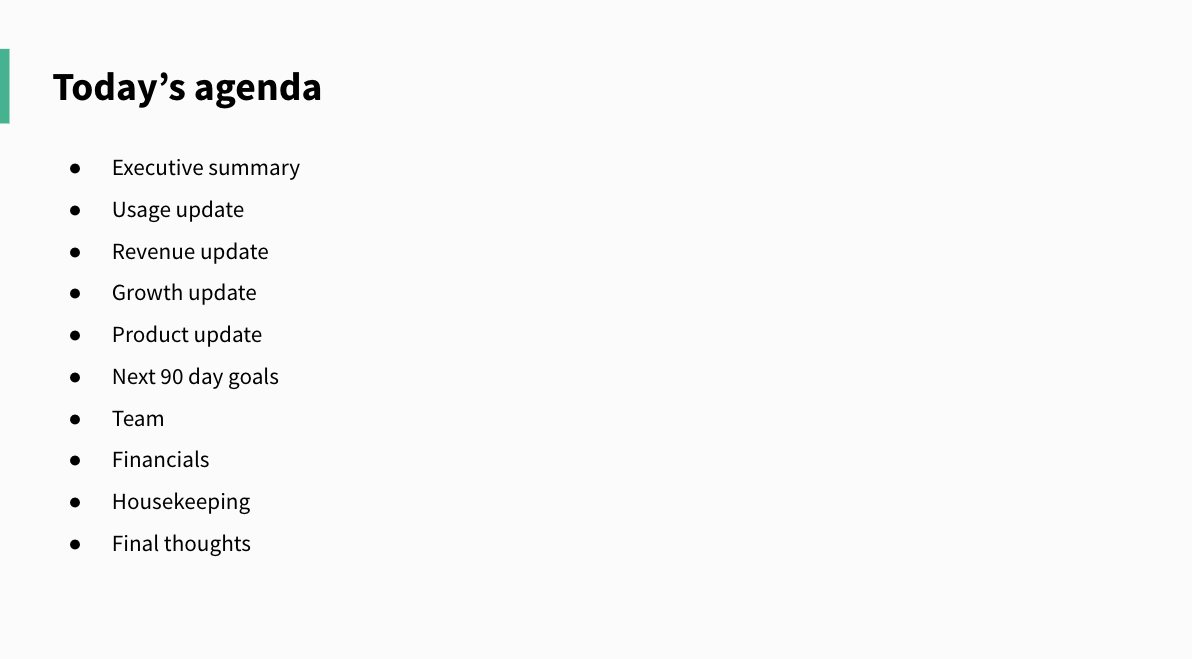
A startup board deck is more than just a series of slides; it's a tool that communicates the health and progress of your company to your board members. It provides a clear snapshot of where the company stands, highlights key metrics, and outlines future goals. Our deck has evolved over time, and each section is designed to provide maximum clarity and insight.
As founders, the way we show up for the board is different from how we show up at Jam every day. The deck is a reflection of that. A board meeting presentation should be a bird’s eye view of the company. Our slides are filled with the good stuff, but also the things that are keeping us up at night. Our board is composed of brilliant VCs, who have been early investors and board members of giants the likes of Airbnb, Slack, and HashiCorp. It’s in our best interest to get their feedback and advice based on an accurate picture of our startup.
You can find out exactly what happens in Jam board meetings in episode 8 of our podcast, Building Jam.
Structuring your board deck for a good meeting
This structure works best for post-PMF startups. If you’re not there yet, you might find these 7 tips I wish I had known about finding product-market fit helpful.
Here’s a quick overview of each section of our board deck template.
Executive summary
The executive summary is the backbone of your deck. It should include a brief recap of the state of the company at the last meeting and the goals for the next 90 days. This sets the stage for the detailed updates that follow.
Usage update
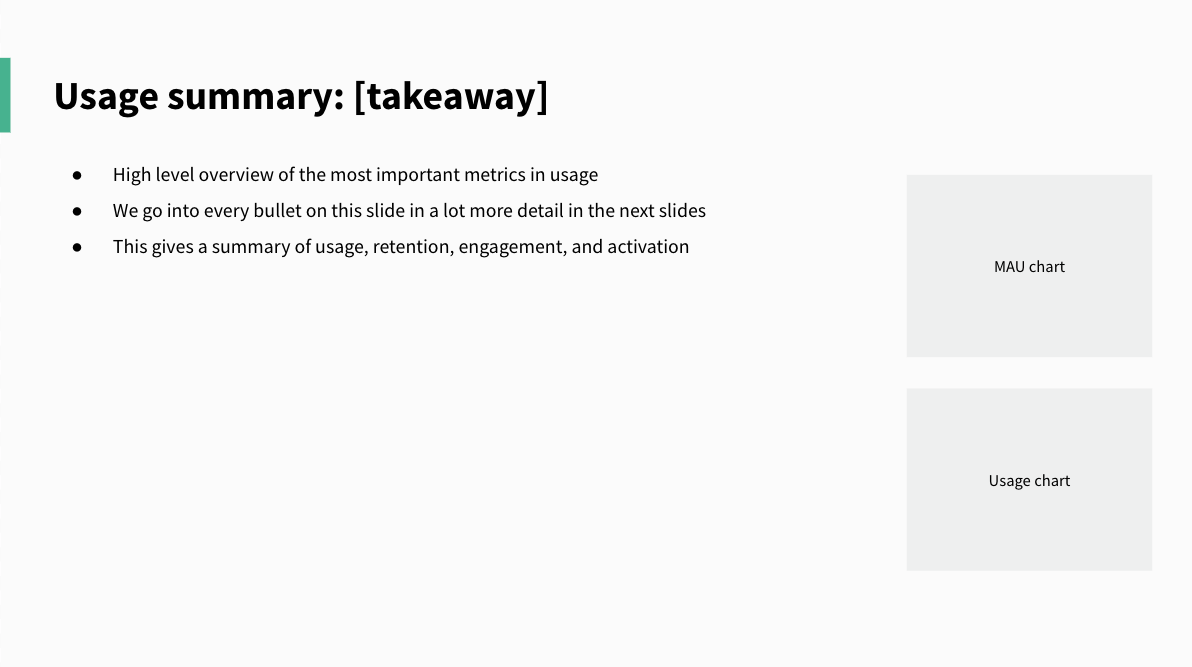
We always kick off with a one-minute clip of recent user interviews, so the board hears directly from users. These clips are invaluable. They bring the board closer to end-users and provide real, unfiltered user feedback. We use Grain stories for this. Then we get into the data. The usage update provides a high-level overview of usage, retention, engagement, and activation metrics, followed by a deeper dive into these areas.
Revenue update
We break down revenue into self-serve and sales sections, providing charts and detailed insights on conversion rates and sales channels. This clear separation helps identify what’s driving revenue and where to focus efforts.
Growth update
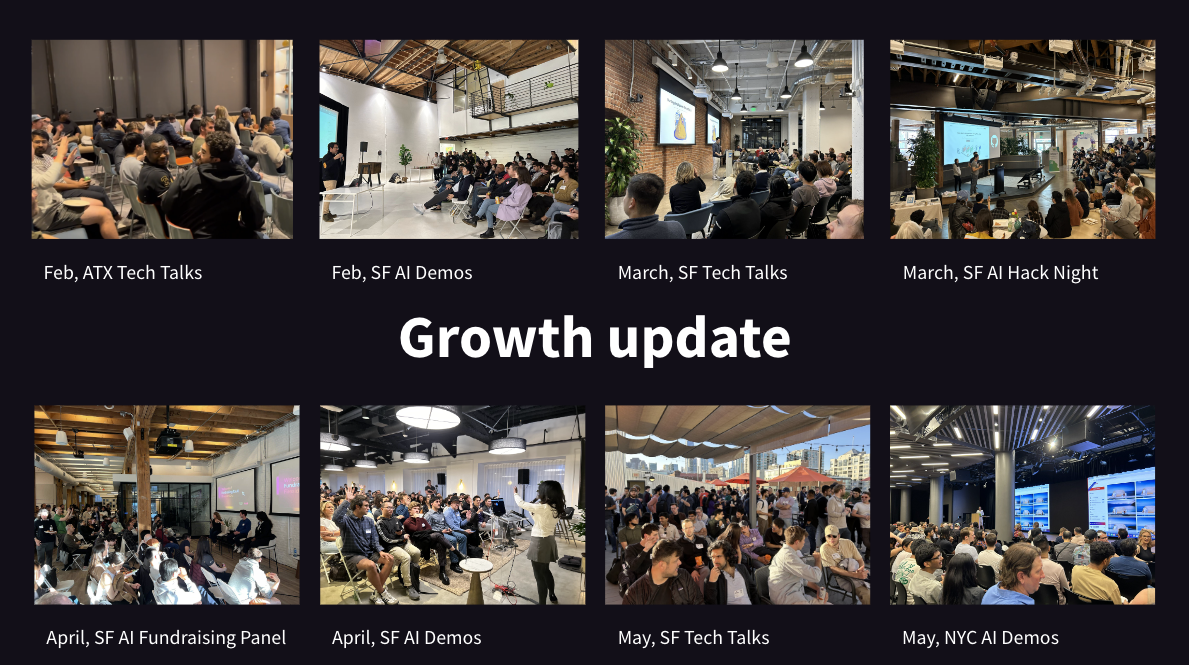
Growth encompasses acquisition, product-led growth (PLG), community, and marketing efforts. We include photos from recent community events to make this more tangible and provide a table of expenses related to community, DevRel, and marketing to ensure transparency.
Product update
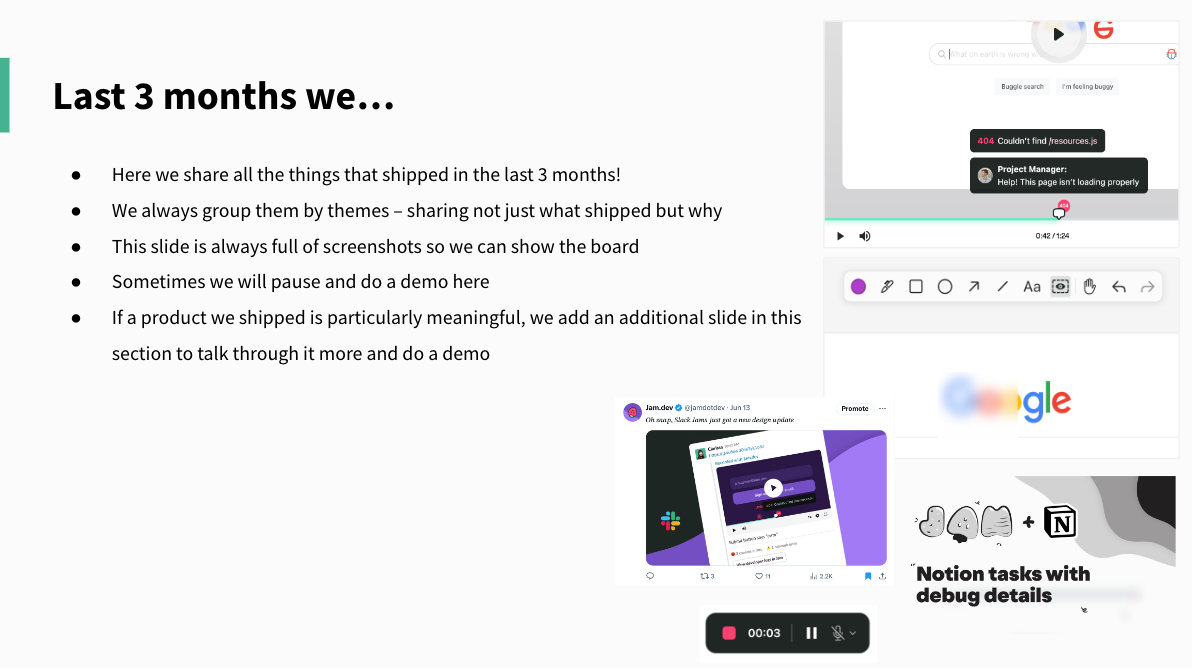
This section covers shipped features and upcoming features, grouped by themes with screenshots and sometimes demos to show what has been accomplished and what's planned for the next three months. We always include an AI update to discuss how AI is shaping our product and the industry.
Financials
Detailed financial charts and forecasts are crucial for transparency and strategic planning. This section provides an overview of the company’s financial health and future projections.
Team update
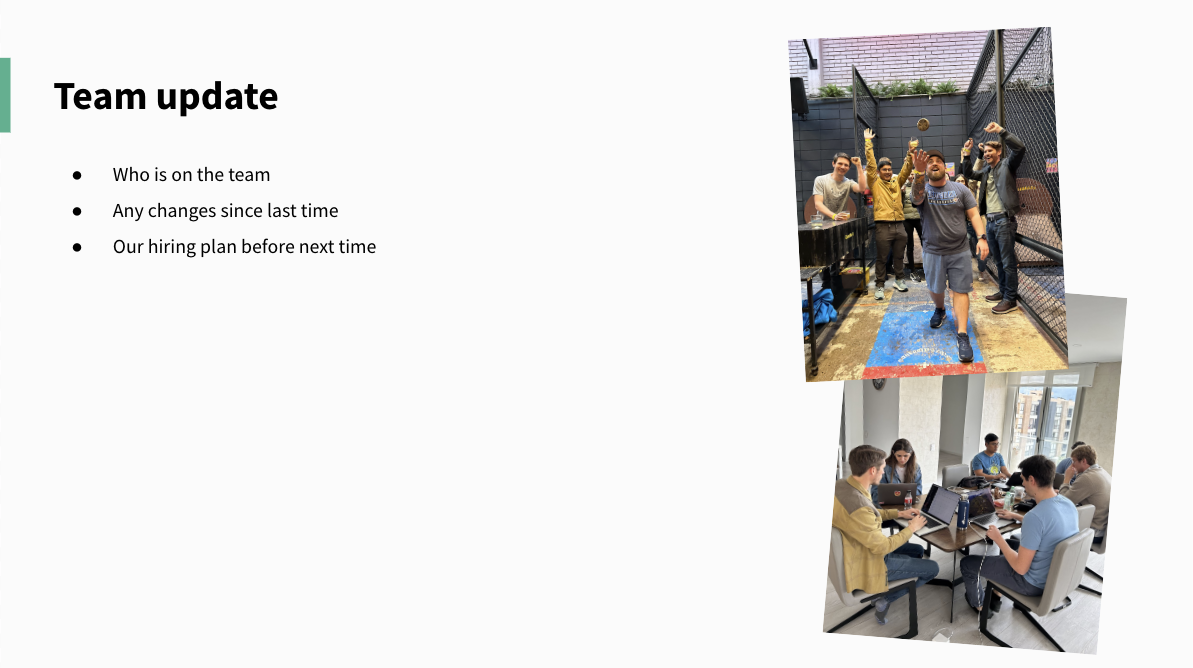
Updates on team composition, any changes since the last meeting, and hiring plans are discussed here. This helps the board understand the team's dynamics and future needs.
Housekeeping
Details on stock options and grants, including how many options are left in the employee pool, are covered here.
Final thoughts and discussion
We always reserve time for final thoughts and discussions to wrap up the meeting. This open floor allows board members to voice any concerns or insights.
Tips for creating your board deck
Preparing a comprehensive board meeting deck is an exercise that combines clarity, detail, and storytelling. By focusing on user feedback, breaking down metrics, and providing visual context, you can create a deck that not only informs but also engages your board members.
- Start with user feedback: Begin your meetings by highlighting user feedback to ground discussions in real-world impacts.
- Detailed metrics: Break down usage and revenue metrics clearly. Separate self-serve from sales to pinpoint different growth drivers.
- Visual storytelling: Use photos and screenshots to make your updates more engaging and tie them to the real world.
- Financial transparency: Be clear and detailed about your financials. This builds trust and allows for more strategic discussions.
- Leave room for discussion: Always reserve time at the end for open discussion to address any final thoughts or concerns.
Using this structure has helped us keep our board meetings focused, informative, and engaging. I hope this blog post helps other startup founders prepare for their board meetings!
You can copy Jam's board meeting template here.
